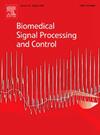基于多尺度超像素动态生成伪标签的潦草监督医学图像分割
IF 4.9
2区 医学
Q1 ENGINEERING, BIOMEDICAL
引用次数: 0
摘要
如今,基于深度学习的训练越来越需要足够的像素级标记数据。然而,在医学图像分割的背景下,准确的像素级标记病变边缘仍然是注释者面临的一个重大挑战。然而,利用弱注释进行医学图像分割是目前最困难的任务之一,因为弱注释只覆盖了图像的一小部分,包含的相关信息很少。为了最大限度地发挥弱标注的效用,我们提出了一种新的依赖于涂鸦标注的分割方法。该方法利用U-Net的多尺度超像素和深度特征,迭代扩展生成精度更高、信息更丰富的伪标签。这个过程包括相似度计算、动态调整机制和多尺度细化的跨时代网络训练。因此,随着高置信度伪标签的逐步扩大和低置信度伪标签的逐步消除,该方法的性能可以逐渐接近一些完全监督的方法。大量的实验表明,我们的方法在ACDC和ISIC2018数据集上优于其他弱注释分割方法。结果表明,该网络在IoU、CPA和Dice上的分割性能分别提高了约1.8%、3.5%和1.6%,95% hausdorff距离(HD95)降低了约0.8。烧蚀实验进一步验证了该方法的有效性。本文章由计算机程序翻译,如有差异,请以英文原文为准。
Scribble-supervised medical image segmentation based on dynamically generated pseudo labels via multi-scale superpixels
Nowadays, deep learning-based training increasingly requires adequate pixel-level labeled data. However, in the context of medical image segmentation, accurate pixel-level labeling of lesion edges remains a significant challenge for annotators. Nevertheless, making medical image segmentation with weak annotations is one of the most difficult tasks currently because the weak annotations only cover a small portion of the image and contain little relevant information. To maximize the utility of weak annotations, we propose a novel segmentation method that relies on scribble annotations. By utilizing multi-scale superpixels and deep features from the U-Net, the proposed method iteratively expands and generates pseudo labels with higher accuracy and richer information. This process involves similarity calculations, a dynamic adjustment mechanism, and multi-scale refinement for epoch-wise network training. Thus, as the step-wise expansion of high-confident pseudo labels and the elimination of low-confident ones, the performance of the method can gradually approach some fully-supervised methods. Our method outperforms other weakly annotated segmentation methods on the ACDC and ISIC2018 datasets, as shown by extensive experiments. The results show the segmentation performance of the proposed network is superiorly increased by approximately 1.8%, 3.5% and 1.6% on IoU, CPA and Dice, respectively, and the 95% hausdorff distance (HD95) decreased by approximately 0.8. Furthermore, ablation experiments confirm the effectiveness of each component of our method.
求助全文
通过发布文献求助,成功后即可免费获取论文全文。
去求助
来源期刊

Biomedical Signal Processing and Control
工程技术-工程:生物医学
CiteScore
9.80
自引率
13.70%
发文量
822
审稿时长
4 months
期刊介绍:
Biomedical Signal Processing and Control aims to provide a cross-disciplinary international forum for the interchange of information on research in the measurement and analysis of signals and images in clinical medicine and the biological sciences. Emphasis is placed on contributions dealing with the practical, applications-led research on the use of methods and devices in clinical diagnosis, patient monitoring and management.
Biomedical Signal Processing and Control reflects the main areas in which these methods are being used and developed at the interface of both engineering and clinical science. The scope of the journal is defined to include relevant review papers, technical notes, short communications and letters. Tutorial papers and special issues will also be published.
 求助内容:
求助内容: 应助结果提醒方式:
应助结果提醒方式:


